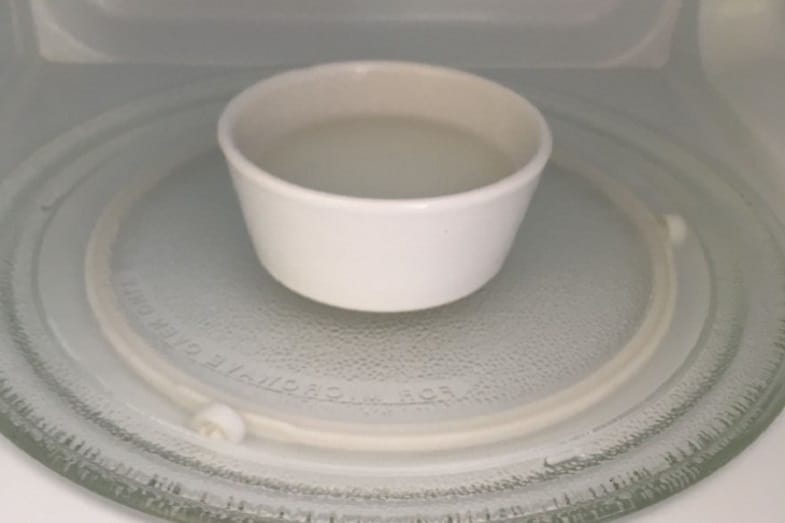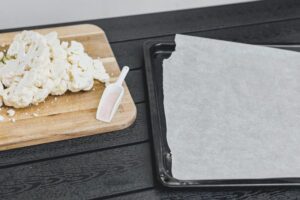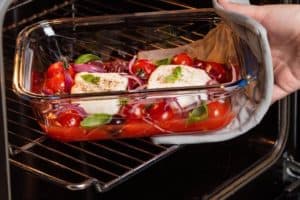How to boil water in the microwave? If you need to boil water fast, the best way is to use the microwave. It is a simple procedure; however, there are important things to consider. In this article, I’ll describe exactly how to boil in the microwave safely and effectively.
How to boil water in a microwave? The best way to boil water in the microwave is with these 7 steps:
- Pour the Water into an Oven-safe Bowl or Cup
- Put a Non-metallic Object in the Water
- Boil the Water in the Microwave
- Tap the Side of the Bowl
- Stir the Boiling Water
- Keep on Boiling the Water If You Want It Sterilized
- Remove the Container Carefully
Boiling water in a microwave is different from boiling it on an open stove. Normally, water will bubble as a sign that it has reached its boiling point. But in a microwave, this isn’t always the case.
Read on to learn more about how to boil water in the microwave, including the steps involved in doing it and how to do it safely.
How to Boil Water in Microwave
Boiling water quickly is great, for example, if you want a quick mug of tea or boiled water for noodles. Boiling water on an open stove will take you 5 to 10 minutes or more, depending on water volume. With a microwave, you can boil water in just 1 to 3 minutes.
But boiling water in the microwave is different from boiling it on an open stove. When using the microwave, you may or may not see the usual water bubbles, which always show up when using the stove.
And you can only boil small amounts of water in a microwave, perhaps only as much as a medium-sized bowl. On a stove, you can boil large volumes of water in a large kettle or large pan. The small cooking space inside a microwave oven places a limit on the quantity of water that you may want to boil.
So, how to boil water in the microwave? The basic method of boiling water in a microwave is to heat it in short intervals of one and a half minutes. You also have to keep on stirring the water until it produces steam. If the water does not produce bubbles, you have to use a thermometer to see if it already reached its boiling point at 100°C.
Can You Drink Ocean Water If You Boil It?
7 Easy Steps for Boiling Water in the Microwave
Why do you need to know these steps when boiling water is just as simple as lighting a match? Well, for one, boiling water in a microwave is very different from boiling water on an open stove. Secondly, there will be no bubbles in the water if you will boil it in the microwave. Thirdly, you can’t just use any water container inside a microwave. Lastly, you need to be careful when boiling water in microwave ovens.

That being said, let us now discuss the steps for boiling water in microwave safely and effectively.
1. Pour the Water into an Oven-safe Bowl or Cup
Not all bowls and dishes are oven-safe. When you use inappropriate containers inside a microwave, they may explode, and you will have a mess on your hand.
Ensure that the container you’re using has an ‘oven-safe’ label. These containers include glass, ceramic, and plastic that is BPA-free and labeled microwave-safe.
Pour water into the bowl or cup, but don’t seal the container. The reason is that hot steam from the boiling water builds up inside the sealed container and then explodes.
Don’t fill to the ledge of the container, too. As water heats, it will rise and will cause the water to spill over the edge. And as a result, you will clean up the mess after boiling the water.
Also, there will be less amount of water after boiling. Some of the water molecules will turn into steam and will evaporate. This reduces the amount of water that you have originally poured into the container.
2. Put a Non-metallic Object in the Water
Place a non-metallic object in the water. The object should also be oven-safe. You can use a wooden popsicle stick, chopstick, or wooden utensil. It is done to prevent the water from superheating. Moreover, it will provide the water molecules something to form their bubbles on.
Superheating must be avoided because it is too dangerous. It occurs when water is heated more than its boiling point. The water will be unable to form bubbles if there are no nucleation sites or rough spots where bubbles can form.
When a nucleation site is introduced or the water is suddenly disturbed, the built-up superheated water will form steam very quickly. When this happens, it will cause a small explosion of boiling water.
If you don’t have a non-metallic object that you can put in the water, use an oven-safe bowl or cup with a chip or scratch on its inside parts. The chip or scratch will act as the nucleation site and help the boiling water to bubble.
3. Boil the Water in the Microwave
Put the bowl or cup inside the microwave and heat the water in short intervals of one and a half minutes. Stir the water regularly until you notice that it is steaming. Even if you do these steps, you may not notice the bubbles on the water.
To check if the water is already boiling, dip a thermometer into the boiling water. Normally, water boils at 100°C or 212°F at sea level. At higher altitudes, this temperature decreases. Use a kitchen mitten, potholder, or a towel to hold the hot container while you are stirring the water.
On average, it will take 1 to 3 minutes for the water to boil in a microwave oven. But this will really depend on the microwave wattage. Here is a breakdown of how long it will take water to boil according to microwave ovens’ specific wattages:
- 600 watts – 4 minutes
- 700 watts – 3 minutes
- 800 watts – 2.5 minutes
- 1,000 watts – 2 minutes
- 1,200 watts – 1.5 minutes
To be more precise, how long it will take to boil water in a microwave oven will depend on the following factors:
- The amount of water
- The heat source
- The type of container
- The atmospheric pressure (or the altitude where the water is being boiled)
4. Tap the Side of the Bowl
If you think that the water has already heated long enough, tap the side of the bowl. This trick will prevent the water from superheating. Tapping the bowl will disturb the water molecules and will cause the release of heat trapped inside them. It will help if you use a long object to tap the bowl to protect your hand. A long wooden chopstick would do.
If you tap the container and the water is already superheated, it will suddenly burst. Water could spill inside the oven. So, remember to use a long tool or object to avoid being burned by boiling water.
5. Stir the Boiling Water
Stir the boiling water with the long object that you used in tapping the container. This action will also show you if the water is superheated or not. If you introduce an object in the water, it will be disturbed and will introduce nucleation sites.
The water will boil over, or it can rapidly burst if it is superheated. If it is safe, it will not suddenly burst.
6. Keep on Boiling the Water If You Want It Sterilized
If you want to sterilize the water, keep it boiling for a couple more minutes. This procedure will kill all the pathogens that it may contain. It is also the US Environmental Protection Agency and the Centers for Disease Control and Prevention’s recommendation.
7. Remove the Container Carefully
You should wear an oven mitt or use a towel to hold the container and get it out of the microwave oven. Do not hold the container with your bare hands, or you will get burned.
We’ve answered the question, “how to boil water in microwave”; next, let’s look at some of the safety precautions to observe when boiling water using your microwave.
How Long Does It Take to Boil Water at Different Altitudes?
How to Stay Safe When Boiling Water in the Microwave
The heat inside the microwave oven, while it is running can cause severe burns on your skin. You need to be very careful every time you are using it for cooking or heating food. In connection with our topic of boiling water, here are some precautions that you need to take.

1. Don’t Use Containers with Perfectly Smooth Inside Surfaces
There is a greater chance of superheating if you boil water in a bowl with a super smooth inner surface. So, it’s best to avoid new or perfect ceramic and glass bowls. It is better to use worn-out and older containers with obvious scratches on the bottom or sides. These imperfections will serve as the nucleation sites to form water bubbles.
2. Don’t Heat the Water for Too Long
It’s the best thing that you can do to avoid superheating the water. Don’t subject it to heat for more than the recommended time. If you do this, you will be heating the water past its boiling point. Also, consider the power or wattage of your microwave. Read its manual. It should have something there that informs you about this limit.
You can also refer to the recommended time required to boil water in a microwave in Step 4 section of this article. Boiling the water for long stretches will also reduce the amount of boiling water that you may need.
3. Protect Your Face and Hands
Keep your face away from the bowl right after boiling. The steam coming out of the water can burn your skin. Additionally, there is a possibility that the water will burst if it is superheated. It can burn your face and damage your eyes.
So, when you are taking out the bowl from the oven right after the water has boiled, don’t put your face anywhere near the container. Most accidents of this kind happen when people look into the bowl to see if the water has already boiled. They didn’t realize that the water was already superheated. Their faces were burned when the trapped steam exploded.
Benefits of Boiling Water in a Microwave
Boiling water can give us certain health benefits. Here are some of them:
1. You Can Save on Energy
On average, microwave ovens only use a small amount of energy to cook food than standard electric ovens, gas ovens, and open stoves. For instance, gas stoves use 40 percent more energy than microwave ovens. We know that the price of electricity is always increasing. So, using an electric oven is more expensive than using a microwave oven.
2. You Can Boil Water Faster
Speed is the best feature of all types of microwave ovens. Given the same amount of water, you can boil it faster than using a gas oven, electric oven, and even an open stove. These little machines can heat and boil water faster because they force the water molecules to shake faster. Heat is directed to the molecules causing them to heat faster.
3. You Can Sterilize Water
Lastly, you want to boil water to sterilize it. We all know that tap water may still contain harmful contaminants. Boiling water will eradicate bacteria and viruses that can cause disease.
Admittedly, not all viruses and bacteria in the water can be killed by boiling. You may need to use UV light to do that. But at least boiling water gives you a fair chance of killing the most common pathogens that can cause diseases.
Conclusion – How Do You Boil Water in Microwave
So, to recap, how to boil water in a microwave? To boil water in the microwave safely and effectively, follow these 7 steps:
- Pour the Water into an Oven-safe Bowl or Cup
- Put a Non-metallic Object in the Water
- Boil the Water in the Microwave
- Tap the Side of the Bowl
- Stir the Boiling Water
- Keep on Boiling the Water If You Want It Sterilized
- Remove the Container Carefully
Be careful when boiling water in the microwave because if you stretch the heating time, its temperature can go past its boiling point. If that happens, the water will be superheated. Chances of sudden bursts of boiling water will increase and can cause skin burns.
Related reading:




